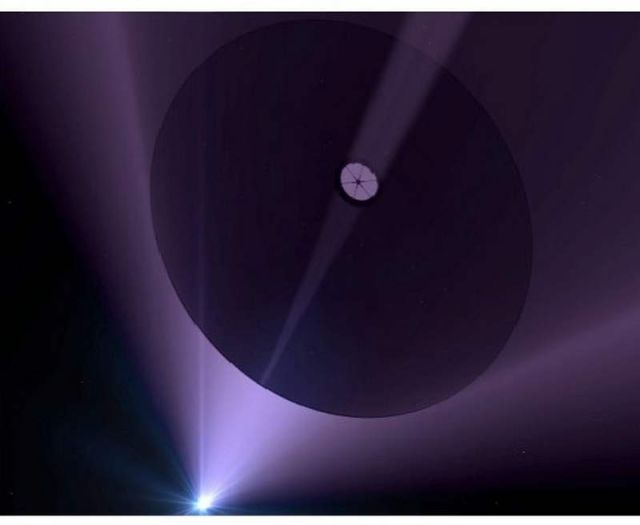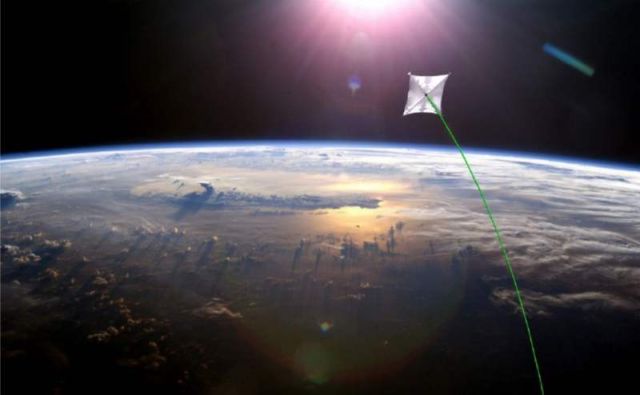Imagine getting to Mars in just 3 days! A Laser Propulsion system could make interstellar travel possible.
New NASA’s propulsion technologies using laser, could one day take us to these cosmic destinations making space travel truly interstellar!
Avove: Rendition of a laser propelled sail (A. Mann)
NASA 360 joins Professor Philip Lubin, University of California Santa Barbara, as he discusses his NASA Innovative Advanced Concept (NIAC) for energy propulsion for interstellar exploration.
Since the beginning of spaceflight, humans have accomplished wonderful feats of exploration and showcased their drive to understand the universe. Yet, in those 60 years, only one spacecraft, Voyager 1 (launched in 1977) has left the solar system. As remarkable as this is, humans will never reach even the nearest stars with out current propulsion technology. Instead, radically new strategies involving the technology already available must be used.
Experimental cosmologist Philip Lubin at the University of California, Santa Barbara, said:
“We propose a roadmap to a program that will lead to sending relativistic probes to the nearest stars.
To do so requires a fundamental change in our thinking of both propulsion and our definition of what a spacecraft is. In addition to larger spacecrafts capable of human transportation, we consider “wafer sats”, wafer-scale systems weighing no more than a gram. The wafer sats would include integrated optical communications, optical systems, and sensors. These crafts, combined with directed energy propulsion, could be capable of speeds greater than 0.25 c.”
The video was developed from a live recording at the 2015 NIAC Fall Symposium in October, 2015. To watch the full original talk please visit: http://bit.ly/1GGh5r8
To view “A Roadmap to Interstellar Flight” (cited in the video) visit: www.deepspace.ucsb.edu







Leave A Comment